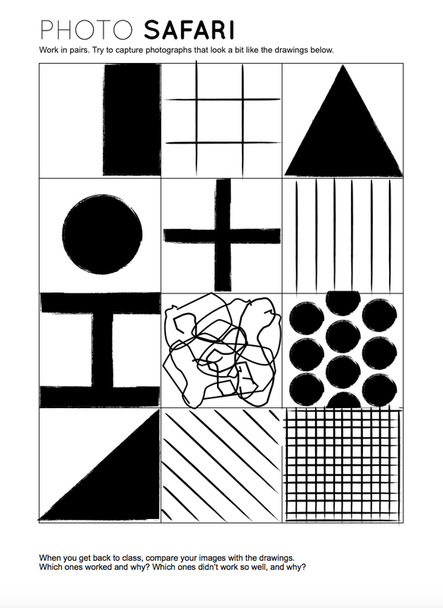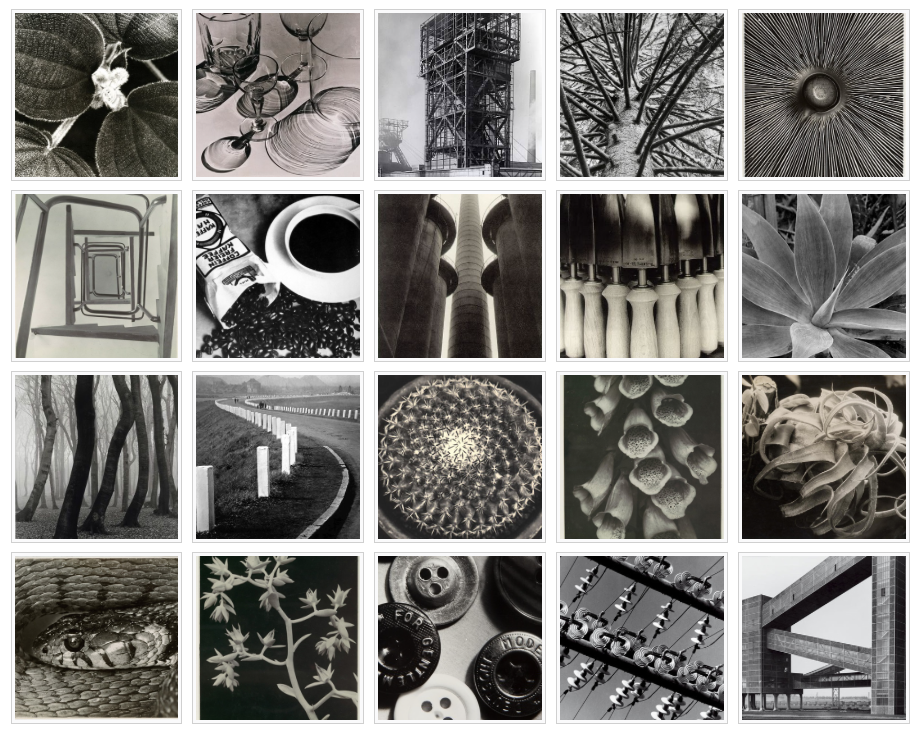Task 1. An introduction to exploring Formal Elements and Principles of Design
The idea is to use whatever equipment you have available (I have used iPods and the Hipstamatic app which generates a square frame) and go on a Photo Safari. Use the activity sheet that identifies a range of compositions in the form of simple patterns, shapes and lines. Your job is to search for photographic subjects that correspond as closely as possible to the diagrams.

The formal elements in photography are slightly different to those you may have encountered in art and design. There is no definitive list but this is the one we tend to use:
Focus: Which areas appear clearest or sharpest in the photograph? Which do not?
Light: Which areas of the photograph are brightest? Are there any shadows? Does the photograph allow you to guess the time of day? Is the light natural or artificial? Harsh or soft? Reflected or direct?
Line: Are there objects in the photograph that act as lines? Are they straight, curvy, thin, thick? Do the lines create direction in the photograph? Do they outline? Do the lines show movement or energy?
Repetition: Are there any objects, shapes or lines which repeat and create a pattern?
Shape: Do you see geometric (straight edged) or organic (curvy) shapes? Which are they?
Form: How are three dimensional objects represented? Do they appear flattened? Do they cast a shadow? How do they relate to the space in the image?
Space: Is there depth to the photograph or does it seem shallow? What creates this appearance? Are there important negative (empty) spaces in addition to positive (solid) spaces? Is there depth created by spatial illusions i.e. perspective?
Texture: If you could touch the surface of the photograph how would it feel? How do the objects in the picture look like they would feel?
Tone (Value): Is there a range of tones from dark to light? Where is the darkest value? Where is the lightest?
Once YOU have gathered your images they can be uploaded to a powerpoint or similar or printed as a contact sheet and annotated. Aim to answer each of the questions above.
Useful discussions can then be had about how closely you managed to match the photographs with the drawings in the diagram. Further discussions can focus on the ways in which your images refer to one or more of the formal elements or principles of design.
The essence of this activity is to encourage you to look at THE FORMAL ELEMENTS purposefully and carefully frame their shots, paying close attention to the edges in your viewfinders.
Look at Albert Renger-Patzsch (below) for ideas :

German photographer Albert Renger-Patzsch was a pioneering figure in the New Objectivity movement, which sought to engage with the world as clearly and precisely as possible.
In 1928 Renger-Patzsch published The World is Beautiful, a collection of one hundred photographs whose rigorous sensitivity to form revealed patterns of beauty and order in the natural and man-made alike. Embodying a new, distinctly modern way of looking at the world, the book established Renger-Patzsch as one of the most influential photographers of the twentieth century.
Task 2. The Age of The Image
The links below will take you to Episodes 1-4 of a recent documentary that helps to explain how and why images are so vital to the way we understand the world.
Please watch 1 episode per week…and write a summary of key findings in your powerpoint with specific examples to show knowledge and understanding.
You will need to make a BBC account to access these links…it is easy and free!
https://www.bbc.co.uk/iplayer/episode/m000fzm9/age-of-the-image-series-1-1-a-new-reality
https://www.bbc.co.uk/iplayer/episode/m000g6mj/age-of-the-image-series-1-2-power-games
https://www.bbc.co.uk/iplayer/episode/m000gg2h/age-of-the-image-series-1-3-seductive-dreams
https://www.bbc.co.uk/iplayer/episode/m000gnzv/age-of-the-image-series-1-4-fake-views
